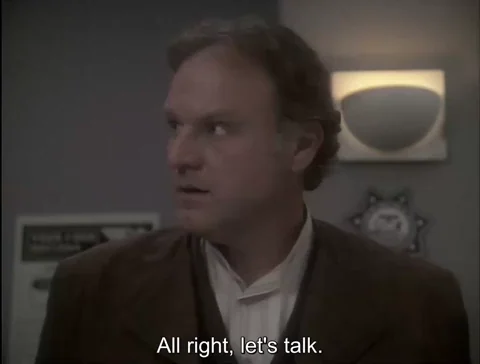
This logo isn't an ad or affiliate link. It's an organization that shares in our mission, and empowered the authors to share their insights in Byte form.
Rumie vets Bytes for compliance with our
Standards.
The organization is responsible for the completeness and reliability of the content.
Learn more
about how Rumie works with partners.
Ever had a tense situation at work where everyone’s emotions ran high, and the conversation went nowhere?

A great facilitator uses techniques to create a calm space where everyone feels heard,making it easier to find solutions.

With the right facilitation techniques, solving problems becomes simple, and teams can work together without butting heads!
1. Address the Issue

Admitting there's a problem and taking the first step to fix it builds trust and sets the tone for solving it together.

You can use these "I" statements to address the issue:
"I think we have a problem that needs addressing."
"I’ve observed [issue]. How can we work on this?"
"I need clarity on [specific issue]. Can you help me understand?"
2. Collect Background Information
There are two sides to any conflict, so it's important to get the whole story. Talk to everyone involved, listen carefully, and ask questions.

Gather the following information to get the full picture:
Events leading to the conflict: Understand what triggered the issue. 🗓️
Everyone's perspectives: Gather viewpoints from everyone involved. 🗣️
Underlying needs or concerns: Look past the surface to find emotional triggers or unmet needs. ❤️
Workload and role clarity: Check if people are confused about their jobs or have too much work. 💼
3. Find the Root Cause of the Conflict
Getting to the root of conflict is importantfor a healthy work environment.

Take these steps to help identify the real issue:
Reflect on communication styles: Notice if unclear or incomplete communication is causing confusion. 🗣️
Identify differing objectives: Assess whether team members are working toward conflicting goals. 🎯
Consider external stressors: Be aware of work changes or personal stress that might be influencing behaviour. ⚙️
Observe recurring patterns: Look for small disagreements that may point to underlying frustrations. 🔄
Quiz
You notice a conflict between two team members that seems to be escalating. Which of the following steps would be effective in identifying the real source of the conflict? Select all that apply:
Considering how they communicate and asking them about their current work goals are the right steps to take. Performance evaluations aren't always related to interpersonal issues. Asking them to talk it out between them may resolve the conflict, but it doesn’t identify its root cause.
4. Support a Private and Honest Discussion

Do these things to create a safe space:
Set the tone: Create calm, judgment-free openness. ✨
Listen actively: Hear everyone with empathy. 👂
Acknowledge feelings: Show trust by validating emotions. 🤝
Ask open-ended questions: Encourage thoughtful responses. ❓
Focus on shared goals: Collaborate to find solutions. 🧠
Choose a neutral space: Ensure privacy and comfort. 📍

Don’t do these things:
Rush the talk: Avoid cutting off others. ⚠️
Ignore emotions: Dismissed feelings build walls. 🚫
Ask leading questions: Avoid yes/no prompts. ❌
Judge responses: Stay neutral, not critical. 👎
Ignore patterns: Overlooked issues can grow. 🔮
Confront in public: Avoid spaces that add pressure. 🏢
Watch the video below for a pro's advice on how to carry out this facilitation technique:
Quiz
Rowan wants to have a discussion with Morgan regarding an ongoing conflict. How can Rowan make sure they have a private and honest conversation? Select all that apply:
To have a private and honest conversation, Rowan should speak where both can feel at ease, ask exploratory and thoughtful questions, and focus on finding common ground. Talking in public for accountability wouldn't allow for privacy!
5. Create a Collaborative Plan
To move forward, work with all involved parties to create a plan that addresses the core issues. 
First, set up open communication, where everyone feels heard without judgment. 👂
Then, identify shared goals.Discuss and agree on common objectives that everyone can focus on. 🤝
Next, explore solutions together by brainstorming ideas as a group to find ways to address the issue. 💡
Finally, set clear, shared action steps and agree on specific next steps and roles for everyone involved. ✅
Take Action
Conflict is a natural part of any workplace, but with these facilitation techniques, you're now equipped to handle it effectively!
With these strategies, you cancreate trust, foster open communication, and turn challenges into opportunities for teamwork and growth.
 Photo by Mapbox on Unsplash
Photo by Mapbox on UnsplashCheck out these resources for more facilitation techniques you can use to solve conflicts:
This Byte has been authored by
Desiree Mok
Educator
BEd

